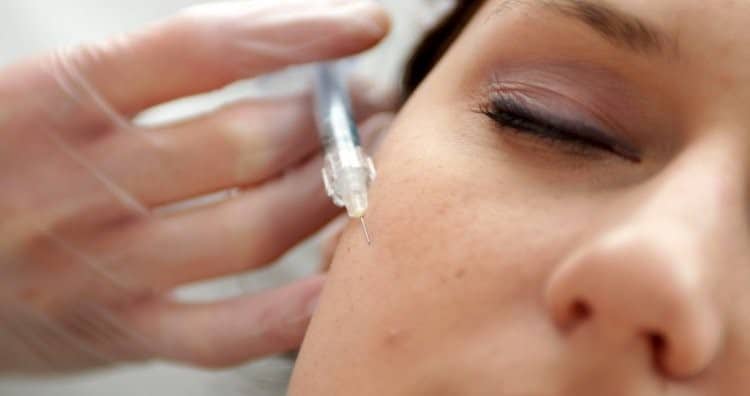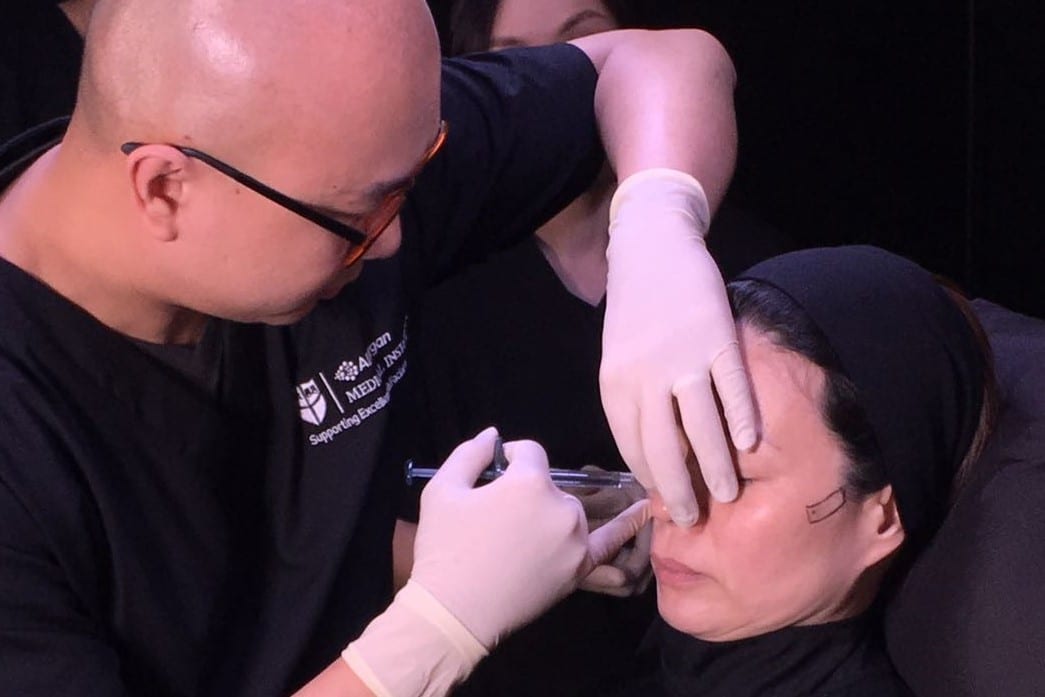- Over six million BOTOX® treatments occur each year, making it a favoured non-surgical cosmetic treatment. BOTOX® is injected superficially into the patient’s skin with
- Home
- Conditions
Acne Scar Removal
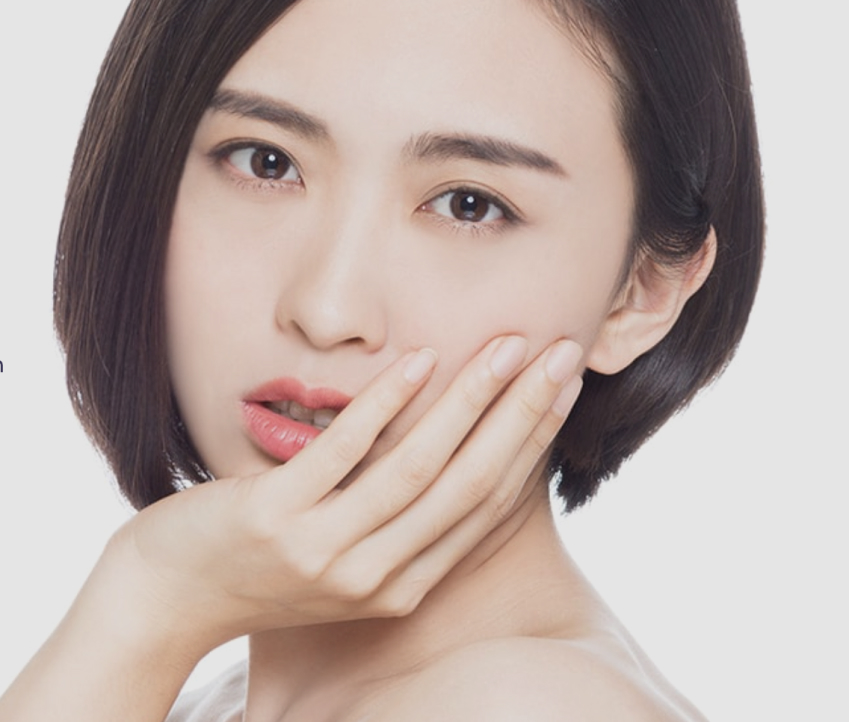
Get rid of unsightly Acne Scars today.
Safe and effective acne scar treatment customised to your skin condition.
Acne Scar Removal in Singapore
Acne scar is the skin change that happens after a bout of acne flare. It is a very common dermatological and aesthetic condition. In a cohort study done in Singapore, acne was found in 88% of adolescents aged 13 to 19 years. 58% of patients with mild to moderate acne were also observed to have developed post acne-scarring, and 18% had hypertrophic/keloid scars. When acne scars develop, they may be both disfiguring and life-altering, causing mental stress, anxiety and even depression.
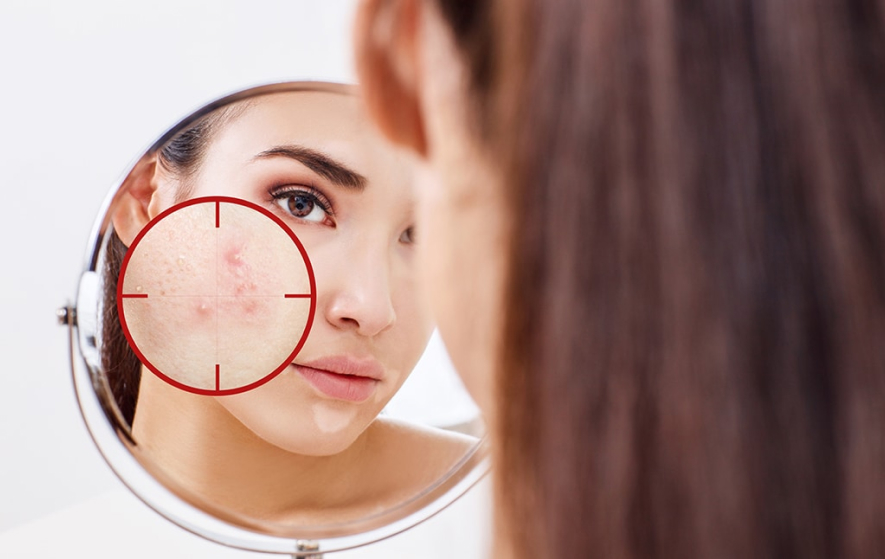
Types of Acne
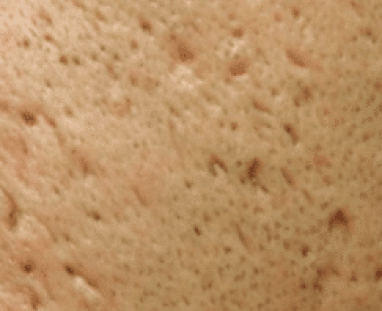
Ice-pick scars
Ice pick scars are usually caused by severe acne, such as cysts that occur deep in the pores. They appear as deep dot-like scars that are pitted. Ice pick scars can be further divided into different severities and depths- deep pits, shallow pits and enlarged pores.
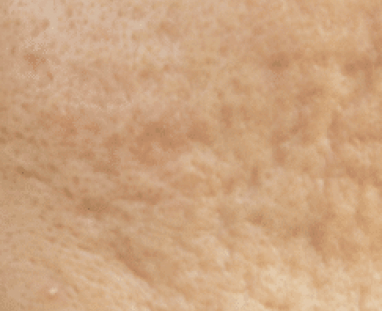
Rolling scars
Rolling scars are atrophic scars which have loss of volume in the skin, which causes depressions of the skin. Rolling scars appear wavy in appearance, similar to a bumpy road, usually with gentle sloping edges. Boxcar scars: Similar to rolling scars, but with more obvious, defined edges.
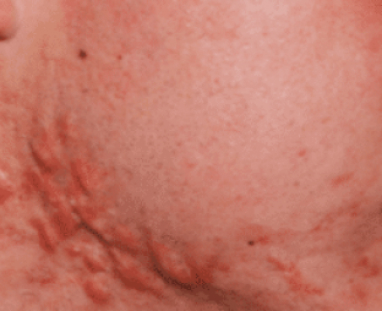
Keloid scars
Keloids scars are enlarged scars that protrude from the skin. They develop due to an overproduction of collagen during the formation of the scar. They can look redder or more brown from the surrounding skin.
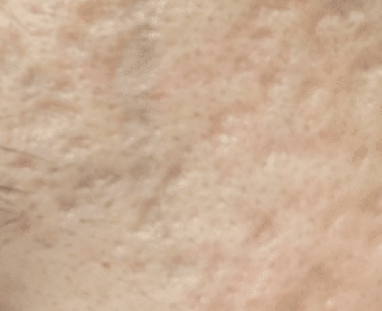
Boxcar scars
Boxcar scars appear because of significant tissue loss from severe acne inflammation. They appear as round or oval depressions with sharply demarcated vertical edges. They are wider than ice pick scars and their base do not taper to a point.
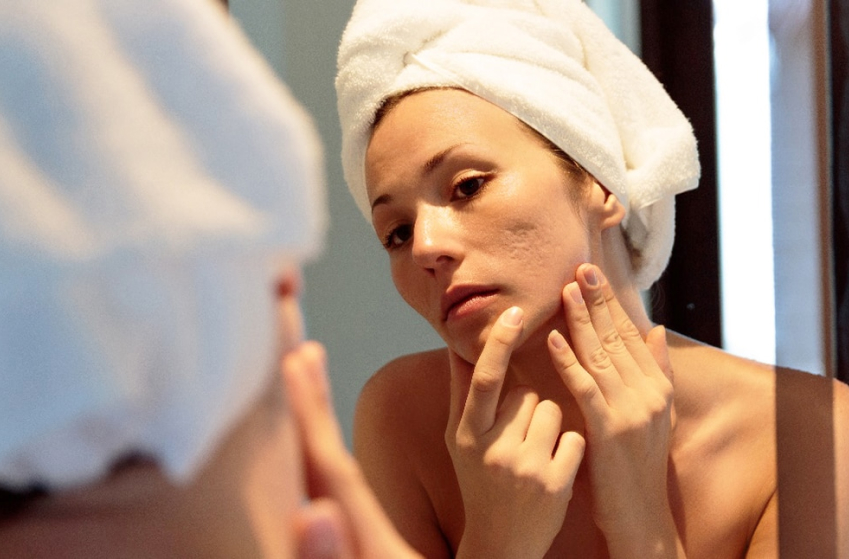
How does Acne Scar develop?
Acne scars are the result of inflammation and destruction of the pore and surrounding skin. While it is a natural response for your skin to repair the wound (acne) by forming new collagen fibers, sometimes the acne flare have destroyed too much collagen fibres in the skin, leading to loss of tissue. This loss of tissue leads to insufficient collagen regeneration, causing depressions and pits that we see in acne scars. Occsaionally, the damage may lead to overproduction of collagen instead, causing hypertorphic/keloid scars. The type of scar depends on how much collagen your body makes.
Can Acne Scars be prevented?
Acne scars are here to stay if we don’t do anything about them. The good news is that we can prevent them. While we cannot predict who will develop acne scars, with effective and early treatment for any cystic acnes found, we can reduce the damage to the underlying dermis and prevent acne scar formation.
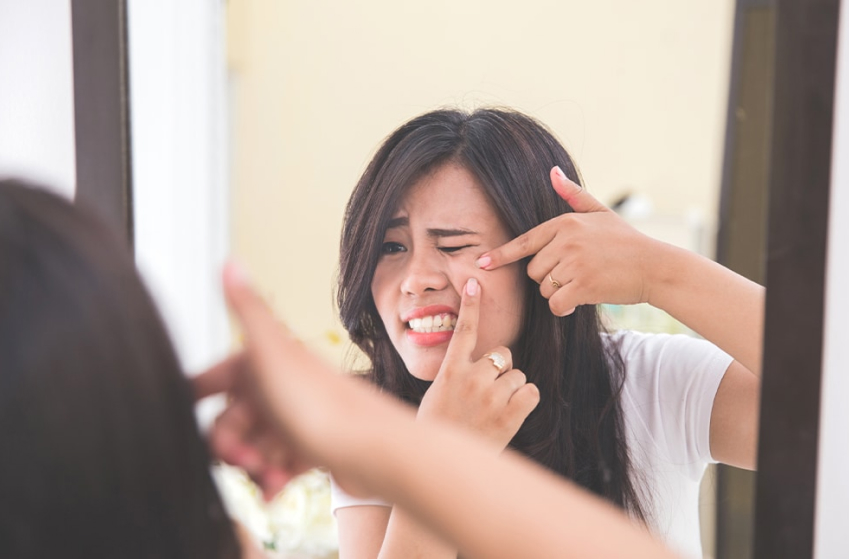
Why should you
see an Aesthetic Doctor to remove your Acne Scars?
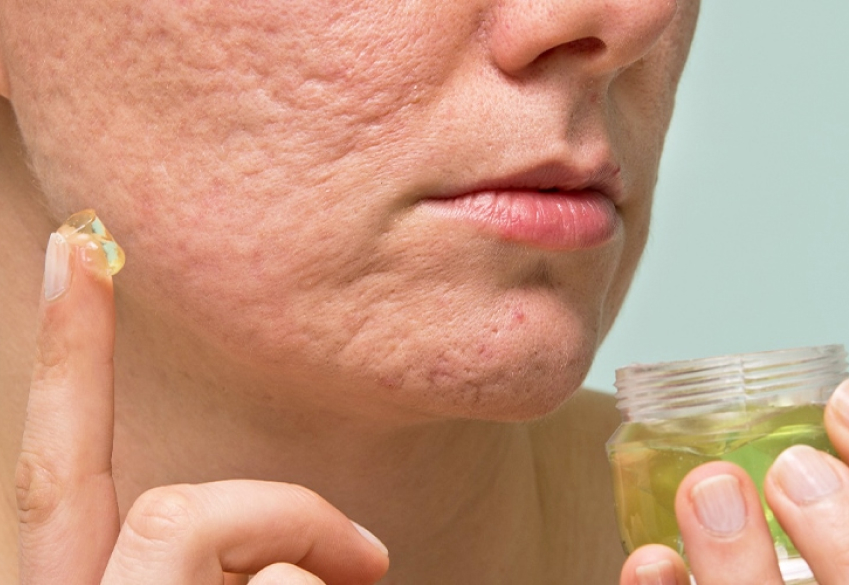
Acne is not permanent, but acne scars are! Once acne scars have formed, they do not simply go away by themselves. In addition, over-the-counter products and home-use cream and other remedies are usually ineffective in treating them. Acne scars are best treated by dermatologists and aesthetics doctors with the correct knowledge and competencies. Given the professional treatment, the acne scars can be improved significantly to achieve a smoother skin.
Based on the various types of scar present, the doctor can tailor a program suited to the needs of the patient.
Different types of
Medical Acne Scar Removal Treatment
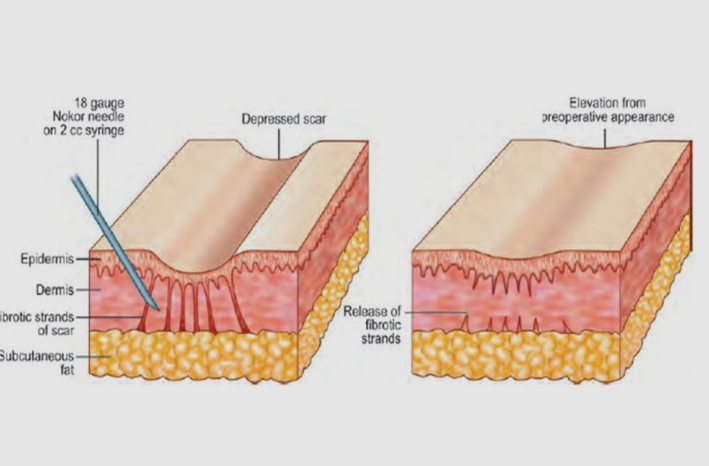
Scar Subcision
Subcision is used to treat depressed cutaneous scars. This procedure is performed with a large bore or broad based hypodermic needle. A puncture in created in the skin to insert the needle into the skin. The needle is then used to break fibrotic bands that are causing the scar to be depressed and tethered to the underlying tissue through a process called subdermal undermining. Repeated treatments release the scar while building collagen beneath it, leading to improved appearance.
TCA Cross
TCA CROSS is also known as the chemical reconstruction of skin scars (CROSS) using trichloroacetic acid. This procedure uses high concentration of TCA to denature proteins at the deeper layers of the scar tissue. As the skin heals, this stimulates collagen synthesis and improve the appearance of the scar areas. TCA CROSS can be utilised to improve conditions of ice pick scars and boxcar scars
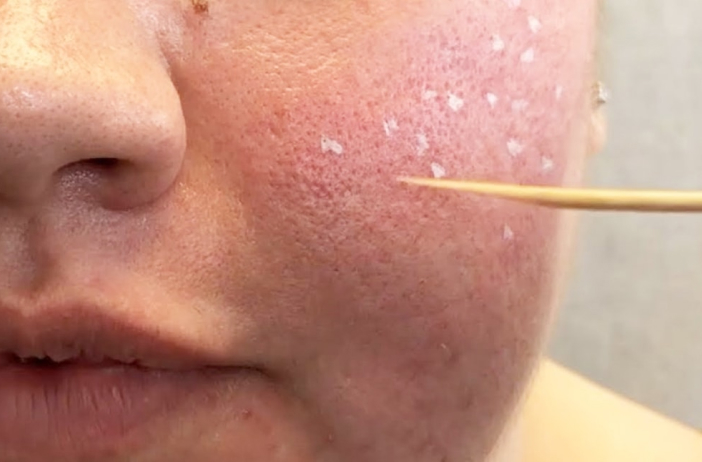
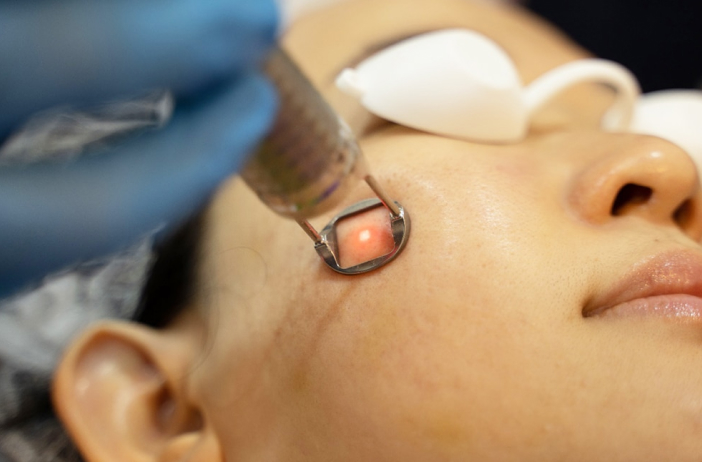
Fractional ablative laser
resurfacing
Ablative laser skin resurfacing means using laser technologies like erbium (ErYAG) or caron dioxide (CO2) lasers to improve acne scar areas. This laser procedure removes the outside layer of the skin at specific and controlled depths. Collagen is stimulated during the healing process and result in a smoother and tighter skin.
Acne Scar filler
Occasionally, deep and broad acne scars will cause visible depressions in the skin. Dermal fillers that are made of hyaluronic acid like Juvederm and Teosyal can be placed beneath these acne scars. These dermal fillers will improve the depressed appearance of the scars, and while they are within the skin, they stimulate production of collagen.
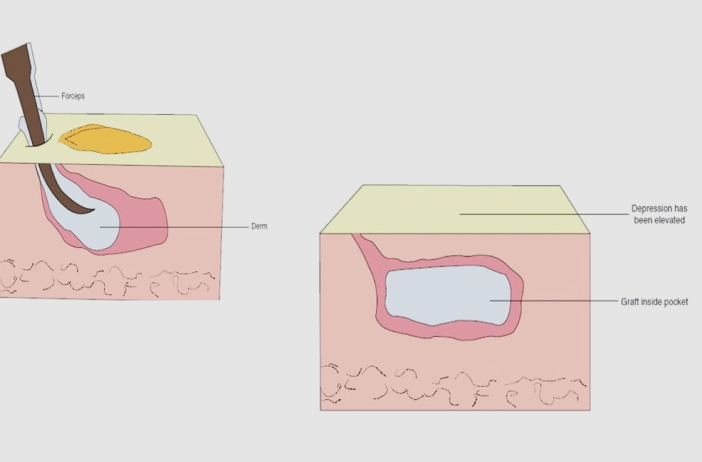
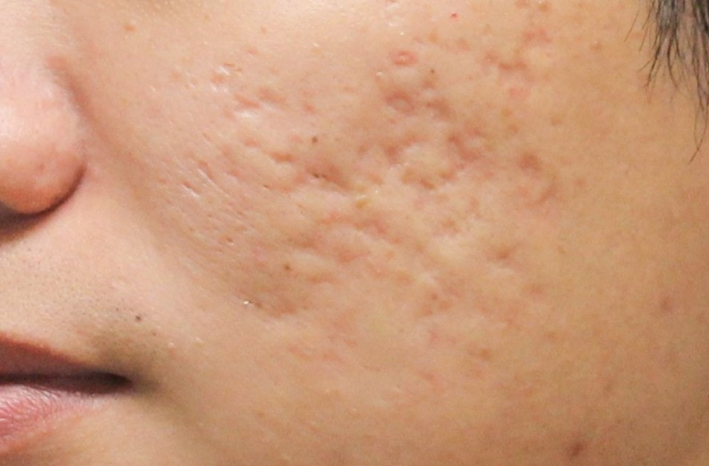
Punch excision
In this technique, the acne scar is cut out and the remaining wound is closed with a stitch. Punch excision is an effective technique to revise deep ice pick scars and deep boxcar scars. If the defect left behind is sufficiently large, a small piece of skin may be taken from another body site and placed into the hole and stitched to allow proper healing, in a process called punch grafting.
Laser Treatment for acne hyperpigmentation
When acne heals, they may not only leave behind pitted scars. Frequently, brown and red marks due to post-inflammatory hyperpigmentation are left on the skin. These areas of discoloration take anywhere from 8 months to more than a year to recover. With carefully curated laser technologies, we are able to treat these symptoms of acne hyperpigmentation and lighten them, returning an even skin tone to our patients.
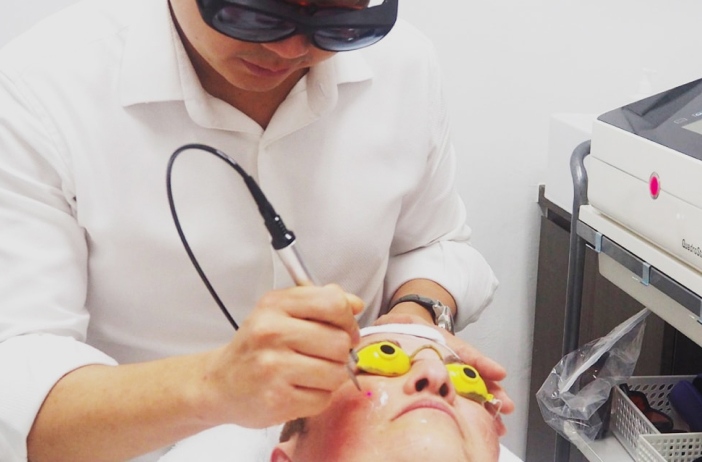
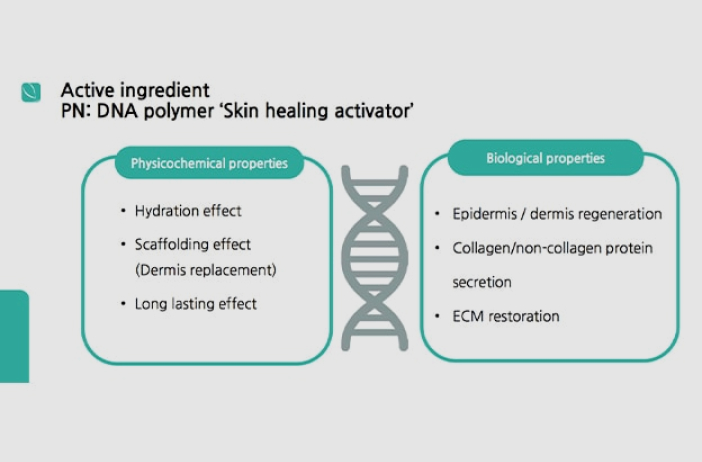
Rejuran Healer : regeneration and repair skin injectables
Rejuran is a skin treatment that has surged in popularity in recent year. It involves delivery of bio-compatible DNA fragments called polynucelotides and polydeoxyribonucletodies, (PN/PDRN) to the dermis to improve damaged skin. Rejuran has been increasingly used together with together with other techniques in acne scar treatments as it can activate new cell growth and collagen production, reducing sunken acne scars and minimising pores.
Customised Acne Scar
Removal Treatment by the Ogee Clinic
Acne scar treatment is a complex discipline. The main goal is to convert the architecture of the scar to a smoother texture that resembles closely to the patient’s surrounding skin.
At The Ogee Clinic, our Acne Scar Program has three pillars of focus:
Specific
Each individual scar is analyzed, its scar type identified, and thereafter matching the scar type to the right method of treatment. This ensures optimal treatment of each type of scar that the patient has. We frequently combine 2-3 treatments on each session to allow the fastest improvement, with the shortest possible downtime for the patient.
Generalised
While the various type of scar goes through an individualised treatment, the overall skin is also analysed and monitored. Fractional laser resurfacing allow large areas of shallow rolling scars to be treated to give a smoother surface. Meanwhile, the patient can also benefit from rejuran healer treatment or other forms of skinboosting techniques for better response to other treatments.
Concurrent acne control
During acne scar treatment, it is crucial that new or severe acne breakouts are prevented, as these can form new acne scars. We treat and control acne through the use of topical creams, and clinic treatments. Furthermore, some of our acne scar treatments are also able treat active acne at the same time.
Treatment Process for Acne Scar Removal
Every individual is unique, and so too are the scar distribution, the scar depth and scar type. Hence, in The Ogee Clinic, we utilise a combination of various techniques to achieve optimal results. It is important to find an aesthetic clinic with a doctor to have the required experience and tools to address all types of acne scar with specialised treatments.
Play Video
Details of Acne Scar Removal Treatment in Singapore
Acne scars can always improve no matter how old they are. With our tailored acne scar removal in Singapore Program, acne scars can improve between 60-80%. The details of our program are as follows:

$450-$1200
Per Session

6-8 months
Duration Per program

3-4 weeks
Intervals

Depends on skin type
& severity
No of Sessions
Benefits of Acne Scar Removal
Smoother Contour
and minimise future deep scarring
Stimulate Collagen Growth
with increased cellular regeneration
Supple Skin
with Enhanced Skin Tone
Synergised Efforts
to improve any existing skin pigmentation issues

Smoother
SKIN
Minimal Downtime
Improved
Self-Confidence
Other Complementary Treatments for Acne Scar Removal in our clinic
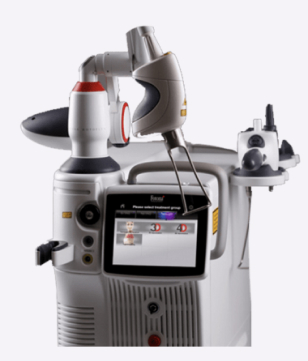
Acne Buster Program
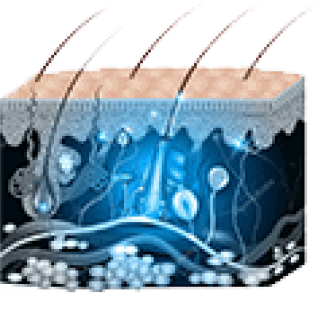
Glow and Radiance Laser
Frequently Asked Questions (FAQs)
Unfortunately no. Acne scars that appear as deep pits or sunken depressions in the skin occur because the existing collagen structure of the skin has been destroyed by acne inflammation. These are permanent. The good news is that although there is no cure for acne scars, there are available treatments that improve the appearance of these scars.
No. our acne scar program deals with improvement of existing scars, making their appearance resemble closer to normal, smooth skin. New scars can be prevented by timely treatment of active acne breakouts, and also reduction of open and closed comedones, which leads to acne breakouts. For further information on how to treat, you can check out our Acne Buster Program.
Medical extractions, removal of comedones, timely acne cortisone injections and targeted acne laser therapy are some of our popular and effective treatments for acne breakouts. By treating new acne episodes in an effective, optimal way, we reduce the risk of future acne scarring.
No, the treatments within our Acne Scar Program are meant to improve the morphology of your acne scars, such that it resembles normal, smooth skin. Certain procedures involve a short downtime of 4-7 days. We will inform you ahead of time if downtime is expected so you can make adjustments to your personal schedule in advance.
It has been postulated that acne lesions tend towards forming scars when there is increasing amounts of inflammation. For instance, cystic acne – which are large acne lesions found deep in the skin, and cause widespread inflammation in the dermis and destroys the normal collagen structure of the skin, increasing the likelihood of scarring.
Yes, all acne scars can be treated and improved, no matter how old they are.
There is no one best treatment for acne scars. Each individual scar has to be analysed and an ideal treatment be matched according to the type of acne scar present. It is common for our patients to undergo 2-3 different scar treatments in each session for optimal results.
As the chance and severity or acne scarring has been linked to inflammation of the acne breakouts, we recommend our patients to treat their acne early. Acne is not permanent, but acne scarring is.
Acne scars can improve with the right treatment program. In our clinic, our patients can expect 60-80% improvement in the appearance of the acne scars with monthly sessions over a 6-9 month period.
Fractional resurfacing laser created thousands of microscopic thermal injury zones in the skin while sparing the surrounding tissues. New collagen will be produced in these thermal injury zones, new skin cells will be formed, replacing older damaged skin. The new skin formed will be more supple, more elastic and have a smoother texture.
It depends. Laser resurfacing are effective in evening out some of the shallow, rolling scars, giving the skin a smoother texture, while pigmentation lasers are effective in dealing with post-inflammatory pigment marks caused by previous acne episodes. There are other types of acne scars that can be better treated with other modalities, and it is best to discuss with your doctor after a detailed examination.
Learn more about Acne Scar Removal
- You have seen celebrities like Kylie Jenner, Madonna or Nicole Kidman spotting pouty lips and perfectly sculpted cheeks and heard the Kadarshians talking about

